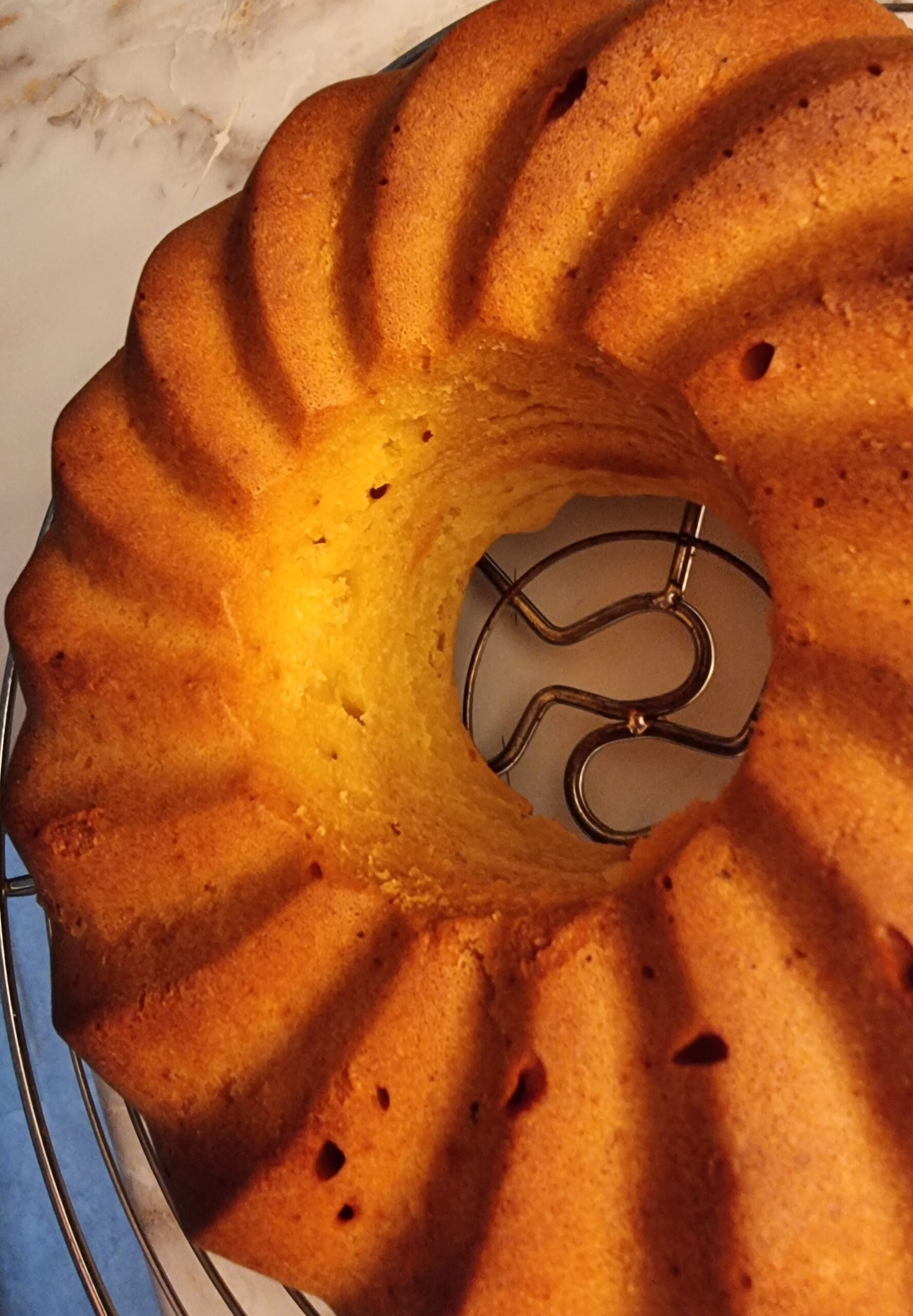
Honey cake with Greek nonfat yogurt
Description
Delicious honey cake with spelt and low-fat Greek yogurt (low-calory, full-flavor)
Ingredients:
Instructions:
Wet Ingredients:
-
Whip the honey until it turns pale and airy.
-
Gently heat the olive oil.
-
Dissolve the lecithin in the warm olive oil (this builds a perfect emulsion).
-
Beat the eggs into the honey, one at a time.
-
Slowly drizzle the oil-lecithin mixture into the honey while whisking constantly (this creates a glossy, thick emulsion).
-
Stir in the Greek yogurt (quark, skyr) until smooth.
Dry Ingredients:
-
Quickly sift the flour and baking powder through a large sieve directly into the batter and fold in quickly.
-
Important: Do not overmix! Spelt gluten is delicate, and overmixing will make the cake dense and bread-like.
Baking:
-
Optional: Let the batter rest for 3 minutes (this lets the flour fully hydrate).
-
Pour the batter into a Bundt pan.
-
Bake for 10 minutes at 350°F (175°C).
-
Reduce the oven temperature to 320°F (160°C) (let the temp drop naturally) and bake for another 30-40 minutes (depending on oven; too long somewhat dries out the cake, too little can make it shrink during cooling)
-
Test with a skewer or knife (the cake should be moist but not liquid; the tester should come out clean).
-
Optional: Brush with honey water (1 Tbsp water + 2 Tbsp honey) for a shiny surface.
Cooling & Resting:
-
Let the cake cool in the pan for 10 minutes, then gently loosen and invert onto a rack.
-
Allow to cool almost completely on a rack, then transfer to a cake dome or similar cover.
-
Let rest at least 2 hours (this allows the starches to set and the crumb to become sliceable).
-
After 2–12 hours: sugars migrate and flavors harmonize (resulting in a silky mouthfeel and full honey aroma).
-
After 12–24 hours: pH balance is reached (for a lighter, more pleasant melt-in-the-mouth texture).
Nutrition Facts
Servings 13
- Amount Per Serving
- Calories 212kcal
- % Daily Value *
- Total Fat 7.5g12%
- Saturated Fat 1.1g6%
- Cholesterol 26mg9%
- Sodium 75mg4%
- Total Carbohydrate 32g11%
- Dietary Fiber 4.3g18%
- Sugars 13g
- Protein 5.9g12%
* Percent Daily Values are based on a 2,000 calorie diet. Your daily value may be higher or lower depending on your calorie needs.






